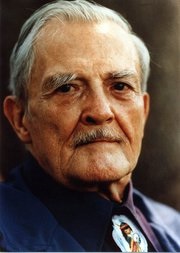Collected Works Audio - Download
- Average Rating:
- Not yet rated
- Topic Areas:
- Milton Erickson
- Categories:
- The Collected Works
- Faculty:
- Milton H. Erickson MD
- Course Levels:
- Master Degree or Higher in Health-Related Field
- Duration:
- 7 Hours 29 Minutes
- Format:
- Audio Only
- Original Program Date:
- Dec 31, 2014
- License:
- Never Expires.
Description
Volume 12
Experiencing Hypnosis
Therapeutic Approaches to Altered States
The original edition of “Experiencing Hypnosis” included two audio cassettes entitled “Hypnosis in Psychiatry: The Ocean Monarch Lecture.” This live recording of Dr. Erickson has been digitized and is available to you as an MP3 download.
—————————————————-
Volume 13
Healing in Hypnosis
Seminars, Workshops and Lectures, Part 1
The original edition of “Healing in Hypnosis” included an audio cassette entitled “Healing in Hypnosis: A Demonstration of Trance and Therapy in Everyday Life.” This recording of Dr. Erickson has been digitized and is available to you as an MP3 download.
—————————————————-
Volume 14
Life Reframing in Hypnosis
Seminars, Workshops and Lectures, Part 2
The original edition of “Life Reframing in Hypnosis” included an audio cassette entitled “Life Reframing: Facilitating Potentials in a Young Photographer.” This recording of Dr. Erickson has been digitized and is available to you as an MP3 download.
—————————————————-
Volume 15
Mind-Body Communication in Hypnosis
Seminars, Workshops and Lectures, Part 3
The original edition of “Mind-Body Communication in Hypnosis” included an audio cassette entitled “MIND-BODY: Hypnotic Alterations of Physiological Functioning.” This recording of Dr. Erickson has been digitized and is available to you as an MP3 download.
—————————————————-
Volume 16
Creative Choice in Hypnosis
Seminars, Workshops and Lectures, Part 4
The original edition of “Creative Choice in Hypnosis” included an audio cassette entitled “Hypnosis: Choice or Manipulation.” This recording of Dr. Erickson has been digitized and is available to you as an MP3 download.
Credits
Faculty

Milton H. Erickson MD Related Seminars and Products
Milton H. Erickson, MD, was an American psychiatrist who specialized in medical hypnosis and family therapy. He was founding president of the American Society for Clinical Hypnosis and noted for his approach to the unconscious mind as creative and solution-generating.
Dr. Erickson was plagued with enormous physical handicaps for most of his life. At age 17, he contracted polio and was so severely paralyzed that doctors believed he would die. While recovering in bed, almost entirely lame and unable to speak, he became strongly aware of the significance of nonverbal communication – body language, tone of voice, and the way that these nonverbal expressions often directly contradicted the verbal ones. He also began to have “body memories” of the muscular activity of his own body. By concentrating on these memories, he slowly began to regain control of parts of his body to the point where he was eventually able to talk and use his arms again. His doctor recommended exercising his upper body only so Milton Erickson planned a 1,000 miles canoe trip to build up the strength to attend college. His adventure was challenging, and although he still did not have full use of his legs at the end, he was able to walk with a cane.
The Ericksonian approach departs from traditional hypnosis in a variety of ways. While the process of hypnosis has customarily been conceptualized as a matter of the therapist issuing standardized instructions to a passive patient, Ericksonian hypnosis stresses the importance of the interactive therapeutic relationship and purposeful engagement of the inner resources and experiential life of the subject. Dr. Erickson revolutionized the practice of hypnotherapy by coalescing numerous original concepts and patterns of communication into the field.
The novel psychotherapeutic strategies which Dr. Erickson employed in his treatment of individuals, couples, and families derived from his hypnotic orientation. Although he was known as the world’s leading hypnotherapist, Dr. Erickson used formal hypnosis in only one-fifth of his cases in clinical practice.
Dr. Erickson effected a fundamental shift in modern psychotherapy. Many elements of the Ericksonian perspective which were once considered extreme are now incorporated into the mainstream of contemporary practice.


